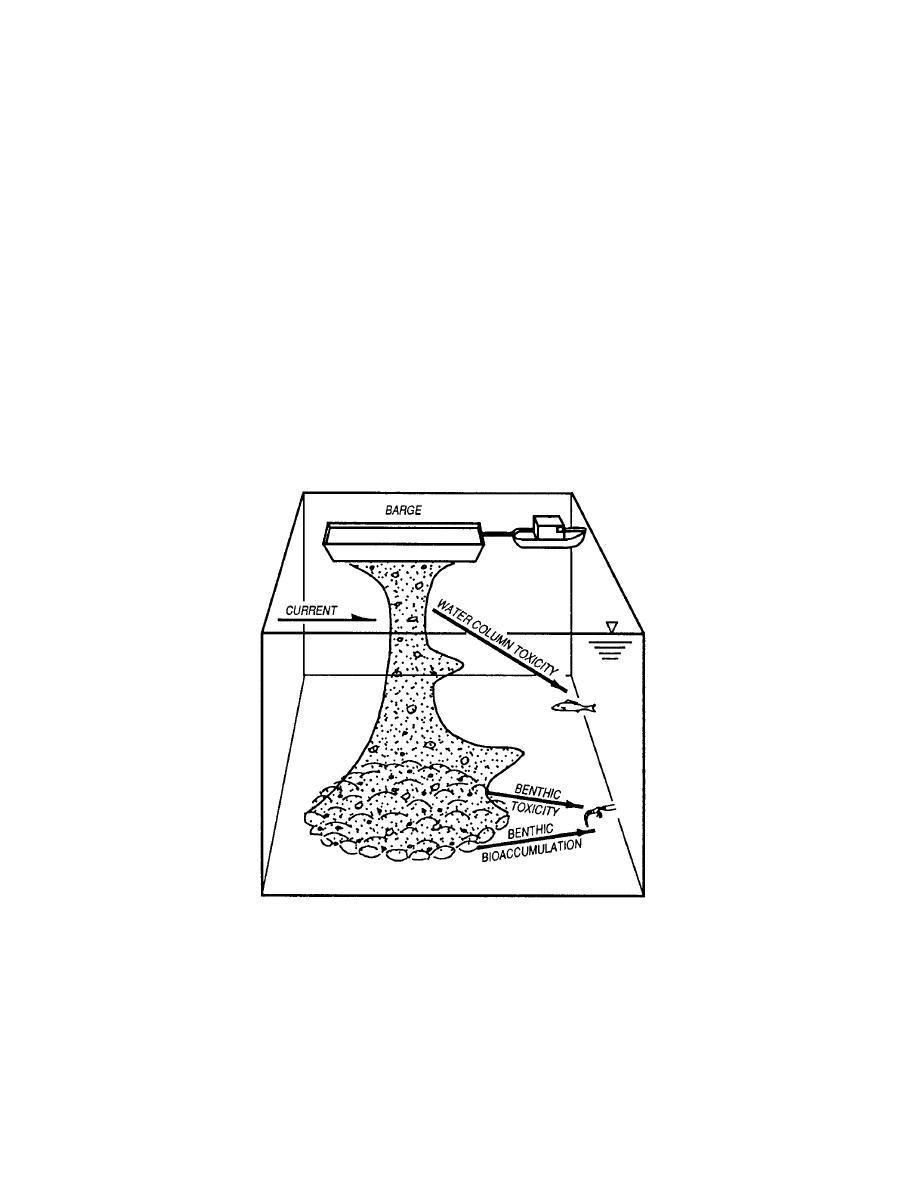 |
||
|
|
||
|
Page Title:
Figure 4-1. Contaminant Pathways for Open-water Disposal |
||
| |||||||||||||||
|
|
 Framework for Dredged Material Management
May 2004
4.3 Evaluation of Contaminant Pathways of Concern
The main emphasis of contaminant pathway testing for open-water disposal is
aimed at determining if a given dredged material is acceptable for open-water disposal
from the standpoint of contamination. If dredged material is found to be environmentally
unacceptable for disposal in the ocean, it also would probably be environmentally
unacceptable for disposal in Section 404 waters.
As shown in Figure 4-1, the potential contaminant pathways for open-water
disposal are water column and benthic. Water-column contaminant impacts must be
considered from the standpoint of water quality (chemical) and toxicity (biological).
Benthic impacts must be considered from the standpoint of toxicity and bioaccumulation.
A tiered approach to contaminant testing and assessments is described in detail in the
dredged material testing manuals for MPRSA and CWA (USEPA/USACE 1991;
USEPA/USACE 1998; USACE 2003).
Figure 4-1. Contaminant Pathways for Open-water Disposal
31
|
|
Privacy Statement - Press Release - Copyright Information. - Contact Us - Support Integrated Publishing |